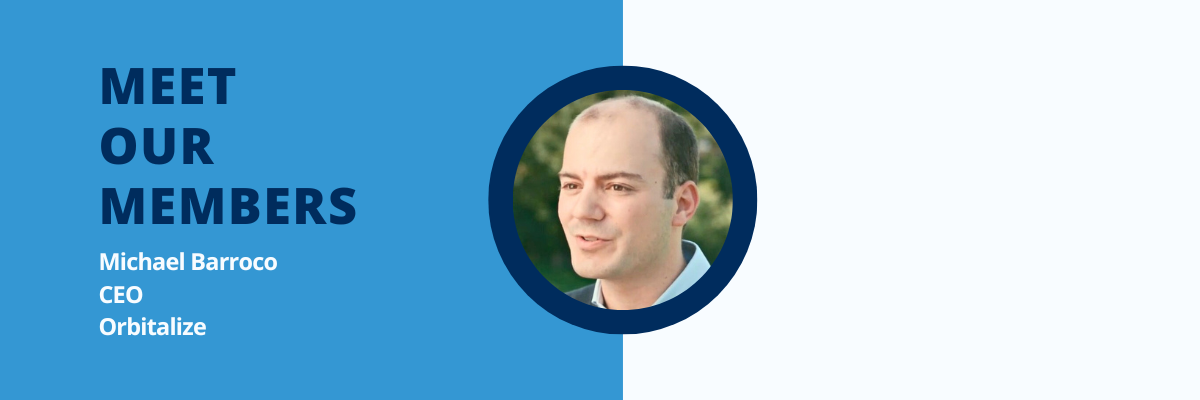Welcome back to the InterUSS ‘Meet Our Members’ series, where we continue to shine a spotlight on the experts shaping the future of unmanned traffic management and beyond. Each interview offers a deeper look into the talented individuals driving the InterUSS Platform.
In this edition, we introduce Michael Barroco, CEO of Orbitalize and a member of the Technical Steering Committee of InterUSS. With a career dedicated to advancing cutting-edge technologies in the aerospace sector, Michael brings a unique vision to the table. In this interview, he shares his insights on technical and regulatory challenges, the evolution of the Dallas shared airspace, and what the next few years might look like for the industry.

Can you tell us about the Technical Steering Committee at InterUSS and its role within the platform? What are you currently working on?
The Technical Steering Committee is responsible for setting the medium and long-term technology strategy as well as safeguarding the technical quality of the project.
Right now, we’re assessing the impact of the change of licensing model for CockroachDB, scheduled for November 2024, and evaluating alternatives.
Why did you decide to take part in this project, and what motivates you to contribute?
I was involved in the demonstration of Remote ID in Switzerland in 2019. Soon after that, I was approached by FOCA, the Swiss civil aviation authority, to support the open-source development of the DSS and related automated testing on their behalf. One big motivation is the opportunity to work with a skilled and smart community of engineers, ably led by Ben Pelletier.

Have there been any challenges you’ve faced while working on InterUSS? How did you and the Committee overcome them?
From a technical point of view, the products offered by InterUSS are complex, since it is a distributed system and the roadmap is strongly driven by standards and regulations. All of this requires contributors to be highly detail oriented.
Building a product that can work in all regulatory environments is far from straightforward – it’s a big challenge to create an integrated, unified technical system that can support those diverse regulations, each with their own specificities. Ultimately, it’s a case of trusting the process: we keep things simple and break the challenges into smaller pieces.
Most people know InterUSS from your presentations on automated testing. If USSs and USSPs are just now starting to map what leveraging and implementing automated testing means for them, what should they know and be considering now?)
Automated testing as proposed by InterUSS offers an open, systematic and universal approach to ecosystem verification, while fostering openness with regard to technology and leveraging data-driven evidence.
By reducing human intervention as much as possible, participants can benefit from operational confidence and quick time-to-market while ensuring continuous improvement and innovation.
Automated testing has been a key enabler for the operations in the Dallas area shared airspace.
How do you see the future of drone operations and U-space implementation evolving in the next 5 years?
I’m hopeful that the impressive progress we’ve seen in the Dallas area over the last six months will provide the encouragement needed by potential adopters towards this decentralized, automated and highly cooperative approach to airspace management. Nevertheless, there is still work to be done on dynamic airspace reconfiguration and traffic information standardization, so it may take a little while yet to get U-Space airspace fully off the ground.